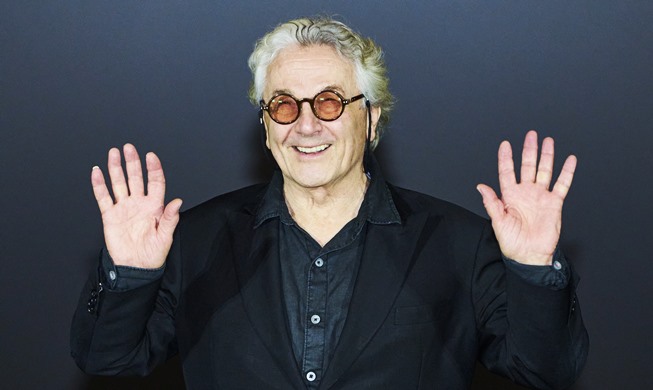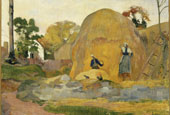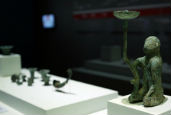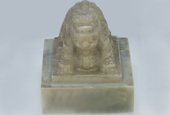-
 Korea.net's 24-hour YouTube channel
Korea.net's 24-hour YouTube channel- NEWS FOCUS
- ABOUT KOREA
- EVENTS
- RESOURCES
- GOVERNMENT
- ABOUT US
Unified Silla was founded in 676 when the two kingdoms of Goguryeo and Baekje lost in battle to Silla. The kingdom maintained its power for more than 200 years until the foundation of the Goryeo Dynasty in 918. The unification of the three kingdoms is a significant moment in Korean history, in that all three different languages, cultures, life styles and customs existent on the peninsula were brought together, integrated and came under the control of a single system.
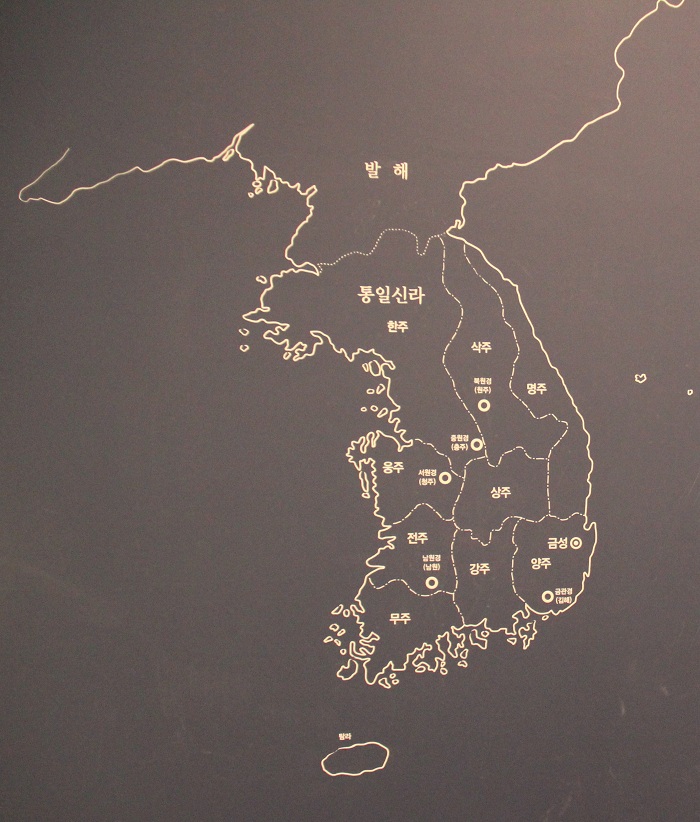
Formed by the integration of the Goguryeo, Baekje and Silla kingdoms, the Unified Silla kingdom consisted of nine ju, or provinces.
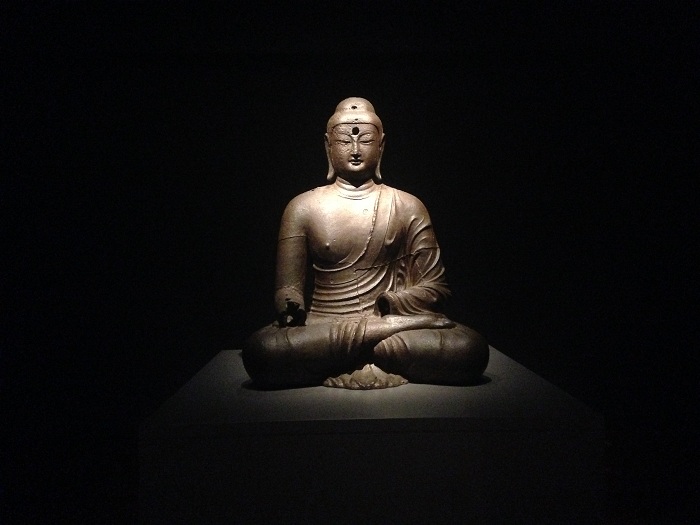
The Iron Buddha from Bowonsa Temple is one of the most significant and representative Buddhist sculptures from the Unified Silla era. The Iron Buddha was on display at a special exhibition at the Metropolitan Museum of Art in the U.S. in 2013. (photo courtesy of the NMK)
Buddhist beliefs among the people of Unified Silla are reflected in the arts, especially in the styles of Buddha statues. In addition to the unique Silla style, artistic elements from the Goguryeo and Baekje peoples, as well as from the Tang Dynasty in China, were integrated together to create the beautiful uniqueness.
One of the most representative Buddha statues from the period sits in the Seokguram Grotto at Bulguksa Temple in Gyeongju, Gyeongsangbuk-do (North Gyeongsang Province). The use of gilt bronze, however, gradually declined with the use of iron on the rise. In particular, the Iron Buddha from Bowonsa Temple is highly recognized, along with the statue in the Seokguram Grotto. The Iron Buddha recently made a brief visit to the U.S. for a special exhibition held at the Metropolitan Museum of Art. It will now be on display at the NMK in its renovated Unified Silla exhibition room.
A variety of artifacts on display were excavated from the Anapji Pond, part of the palace complex in Gyeongju, and from the adjacent castle. They include ceramics, pottery and metal works, all imported from Tang China, giving us a peek into the active cultural exchange that went on between Unified Silla and the Tang Dynasty. On display in the new exhibit are green-glazed pottery items comparable to the similar Dangsamchae items from Tang China.
The displays in the newly opened Unified Silla room offer a lot to see and learn about the unified kingdom. There is a candle stick from Inyongsa Temple, a piece of pottery from Ingaksa Temple and incense burners from Mireuksa Temple in Malheul-ri, Changnyeong-gun County. There is also on display a sariho, a gold-plated silver bowl with a pattern of two birds on the surface. It will be shown to the public for the first time in this new exhibit, after having undergone a lengthy restoration.
Another noticeable change in the Unified Silla room is the installation of touch-screen magnifying glasses. Visitors will be able to study the patterns engraved onto each artifact more closely using the adjacent monitors. The room is also designed with more color and subtler elements that will help people focus more on the displays.
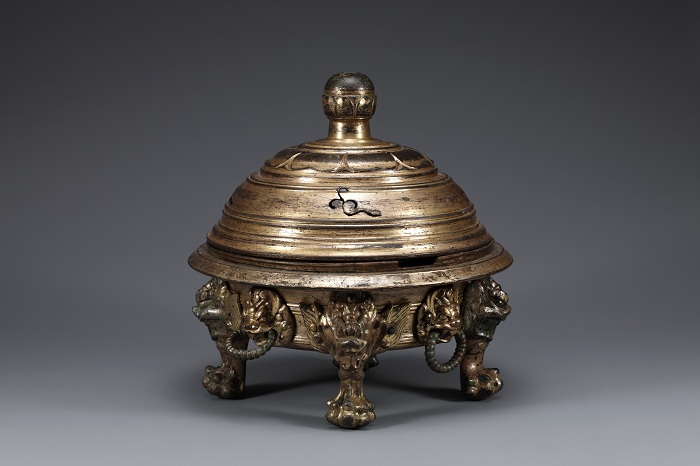
An incense burner excavated at Mireuksa Temple in Iksan. (photo courtesy of the NMK)
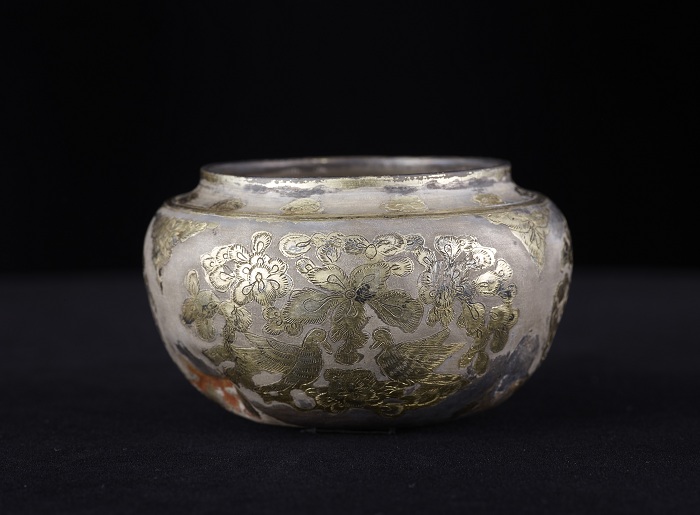
The sariho, a gold-plated silver bowl with a pattern of two birds on the surface, offers visitors a look into the luxurious and cultured lifestyle of Unified Silla royalty. (photo courtesy of the NMK)
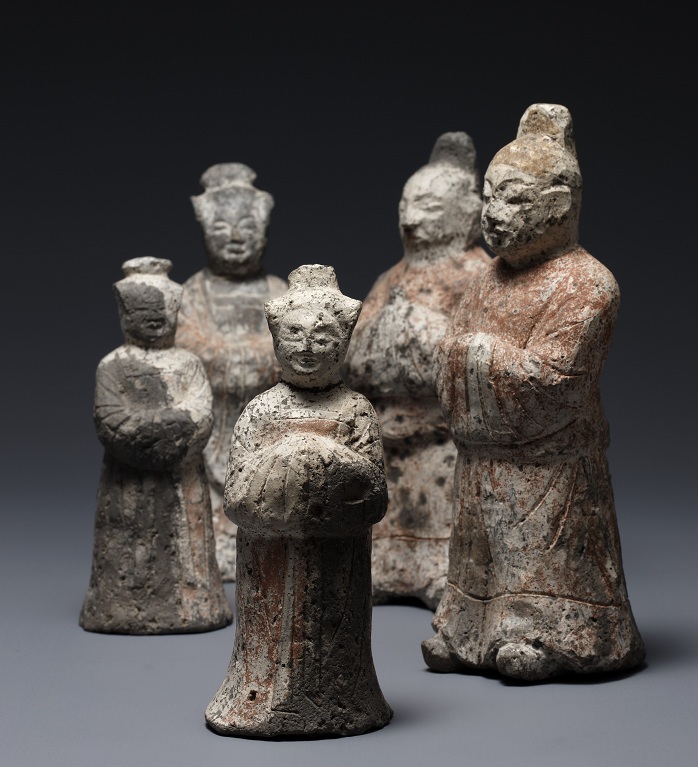
The newly renovated Unified Silla room has on display burial mound figurines excavated at Yonggang-dong, Gyeongju. (photo courtesy of the NMK)
By Lee Seung-ah
Korea.net Staff Writer
slee27@korea.kr
Most popular
- First hearing-impaired K-pop act hopes for 'barrier-free world'
- Event 'K-Beauty Hang Out' draws hundreds in Philippines
- 'Mad Max' director impressed by 'cinema-literate' Korean viewers
- Ceremony in Seoul inducts 2,641 content creators of Korean culture
- Romanian presidential couple visits national cemetery




